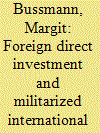| Srl | Item |
| 1 |
ID:
112265


|
|
|
|
|
| Publication |
2012.
|
| Summary/Abstract |
The development of total energy consumption is important in a world with limited resources. It is the result of two basic tendencies working in opposite directions: growth in number and in use (such as more cars and driving more) and improvements in energy efficiency (such as more fuel-efficient engines). Since the 1970s growth of energy consumption has slowed down in Sweden. This means that increasing supply has been counteracted by measures improving overall energy efficiency to a larger degree than before. How can long-term development in energy consumption be analysed? This paper proposes a focus on stocks of energy-converting artefacts as a tool for such analyses. In order to show the fruitfulness of this approach, historical data on cars, dwellings and lamps in Sweden are used.
Results from the cases in this paper show considerable gains of efficiency in fuel consumption in private cars and heating efficiency in multi-dwelling houses. Demographic factors are important for the outcome. The approach seems to promise a way to analyse energy efficiency that captures both promoting and counteracting factors at both the micro and macro level.
|
|
|
|
|
|
|
|
|
|
|
|
|
|
|
|
| 2 |
ID:
094691


|
|
|
|
|
| Publication |
2010.
|
| Summary/Abstract |
Liberals claim that countries avoid conflict in order not to disrupt economically beneficial exchange. The statement that economic integration reduces the likelihood of conflict is largely based on the effects of trade. A similar rationale can be applied to economic interdependence in the form of international capital exchange. A state is expected to avoid political risk, especially severe forms such as militarized disputes, in order not to deter investors. This study tests, on the dyadic and monadic levels of analyses, whether the liberal peace proposition holds when economic integration is operationalized as foreign direct investment (FDI) stocks, inflows, and outflows. The results for the years 1980-2000 indicate that inflows and stock of foreign investment reduce the risk of an outbreak of a fatal dispute, regardless of whether they are tested in a single equation or a simultaneous equation model. Thus, reverse causality does not bias the pacifying effect of foreign investment inflows and stock. The results also support the underlying notion of the commercial peace that militarized conflicts inhibit foreign investment. The onset of a fatal conflict reduces FDI inflows, and, if tested in a two-stage instrumental variable approach, FDI stock, the most complete measure of economic integration through foreign investment. Accounting for endogeneity seems particularly important when analyzing the link between the onset of fatal disputes and the outflow of FDI.
|
|
|
|
|
|
|
|
|
|
|
|
|
|
|
|